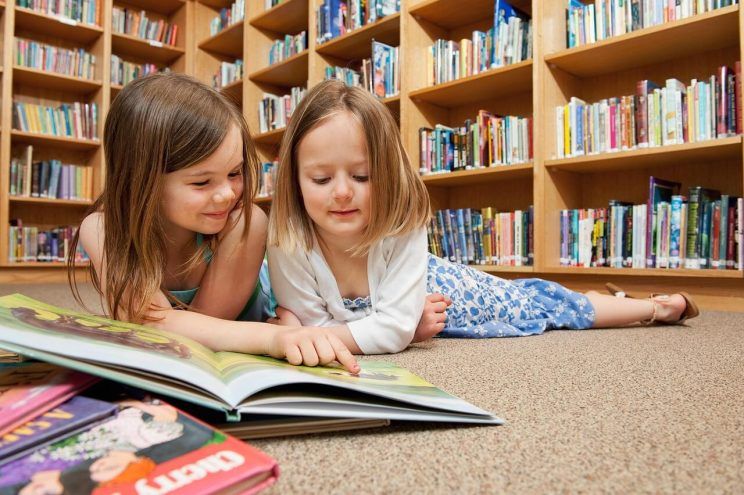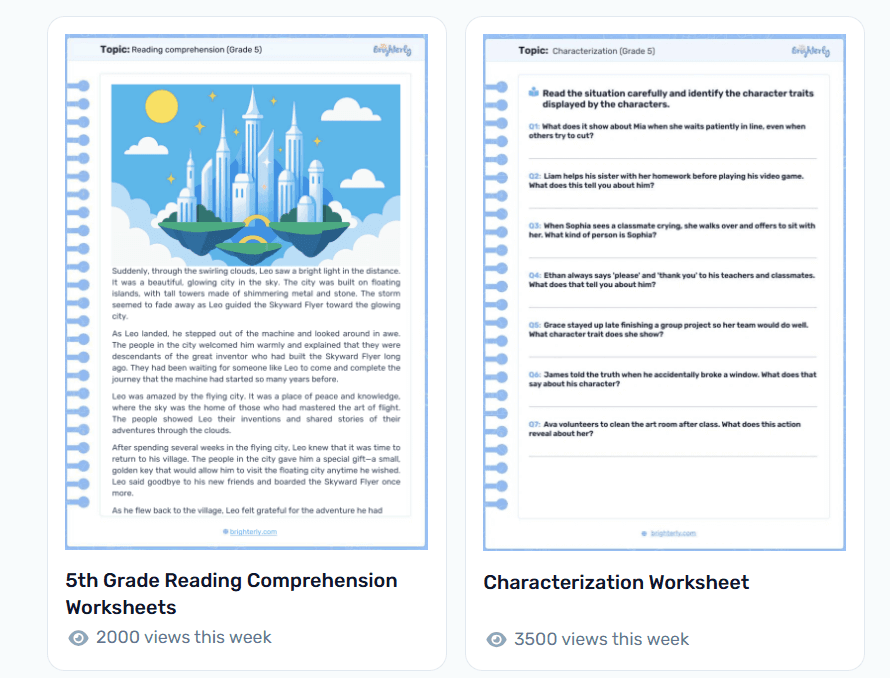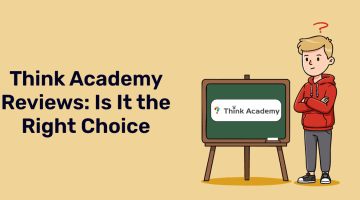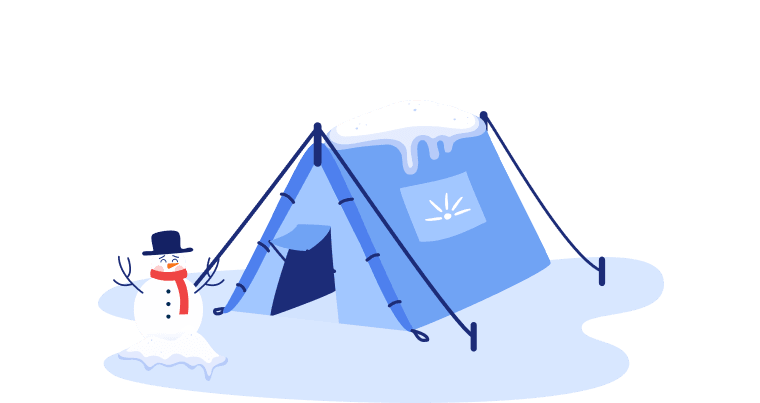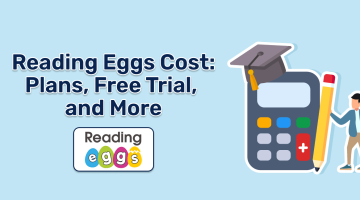What Are the Elements of a Story? Guide for Parents & Kids
reviewed by Marvi M. Andres
Updated on November 5, 2025
We all tell stories. For example, you can even create one based on how your day was. Still, high chances are it won’t be great. Why? Because of story elements! They set the tone and keep the listener engaged.
What are story elements, and how exactly do they work? Dive into our short guide to learn more.
What are the elements of a good story?
A good story depends on the narrative elements that are literary building blocks. They do an important job of showing what or who the story is about, where it happens, and what the problems of a story are. When they come together, a reader gets a compelling narrative that is easy to follow and enjoy.
However, having each element of a story present may not be enough. The more you develop each of them, the better value and understanding it can bring.
Let’s consider the key elements of a story in more detail:
Story element #1: Plot
A plot is an array of events or actions that make up the story. In other words, it is what happens from the beginning of a story to the very end.
What is a good plot arc? It’s when you have a clear beginning, middle, and end.
At the very start, we meet a character. Then the adventure unfolds. It leads to the exciting point, a climax, and then the story wraps up, where you get the ending.
Sounds easy, right? Yet, it’s important to teach a kid the 5 elements of plot structure:
- Exposition. It presents a story, offering background insights and information behind the events.
- Rising action. That’s when your story starts to unfold. It is often the longest part and includes events that lead to the turning point, a climax.
- Climax. Yep, that’s one of the plot elements that a reader is waiting for, the resolution of a conflict. In a fairy tale, it’s the moment when a knight fights a dragon.
- Falling action. Next, once the character resolves a conflict, it’s time to show what their deal is after it.
- Resolution. Lastly, you don’t want your story to be abrupt. Here, you can present a new challenge or simply show the closure, moral of a story.
Note: To teach story plot elements, ask your kid to summarize other stories in their own words or guess what may happen next when you read together. You can also do reading tests to check their understanding.
How Brighterly helps kids learn story elements
One of the most effective ways to teach a kid the elements of a good story is via reading lessons.
For example, the Brighterly math and reading platform offers personalized sessions with reading tutors. They use fun stories to help kids identify not only plot and structure but also other story elements in each tale.
Brighterly programs offer vivid benefits:
- Its programs are rather comprehensive, covering listening, speaking, and writing, and, importantly, follow the US-accepted state school practice.
- Plans and lessons are customized to each child’s pace and needs.
- Lessons are held 1:1 to reserve the maximum attention and enhance focus.
One-on-one guidance makes learning enjoyable and boosts reading comprehension, while reading worksheets for kids makes it easier to recognize and remember the elements of a narrative story.
Worksheets work well when improving reading and storytelling skills at home. Thanks to the PDF format, you can use them either on tablets or as printable handouts after reading aloud.
Story element #2: Setting

Setting is as crucial as the plot. Why? It is the “where and when” of a story, the location and period.
It’s what defines whether a story will be a classic fairy tale with a knight and princess, a lion in the magic kingdom, or a real-world situation. The setting provides the context, core, and environment for characters and events to develop.
What is a good way to show what setting, as an element of a story, is about?
Show a kid how different the worlds of a story can be:
- Tell them a story set in an old house with a spooky mood, and then provide one set on a sunny beach during the day.
- Explain how setting helps visualize the story.
- Ask them such questions as “Where does it happen?” or “When does it happen?”. Make them talk about details, time, and surroundings.
It’s all about making the story feel real and explaining characters’ actions.
Story element #3: Characters

Characters are another pillar of any story. They are “who” the story is about, from people and animals to robots and imaginary creatures.
Notably, every story has at least one main character that brings the story into motion. But surely, there can be more who either help or confront the main character.
If you want your kid to better recognize elements of a narrative story, show them that there are two types of main characters:
- Protagonist. The main character who tries to solve the conflict or issue.
- Antagonist. This character or force creates obstacles for the protagonist and is a cause of the main conflict.
In particular, when reading a story, you can ask kids questions about characters’ motives, characteristics, and actions.
Note: If you are teaching younger kids, use various games or such elements of a story worksheet that focus on character development.
Tasks or cards with specific questions encourage children to think and analyze stories. That way, they understand characters better. Moreover, they can later resort to them when creating a story.
Story element #4: Conflict

Some people say that there is no story without conflict. In reality, there’s no action without it.
Conflict is a challenge or problem in a story that characters are solving or overcoming.
It may be a dragon or a misunderstanding between friends, but it should be in combination with other storytelling elements. As a narrative goes, the characters face obstacles and try to resolve conflicts. This creates suspense and keeps readers interested.
In the end, the character resolves the conflict, and the knight defeats a dragon, or friends eventually make up.
So, to teach kids this type of story element, do storytelling or narrative writing with different conflicts and plots, and topics behind the conflict.
Story element #5: Theme
The theme is the central idea or message that goes through the whole story. It may teach a reader about life, friendship, courage, or kindness via symbolism or other literary devices.
In particular, every great tale has this type of story element. So, when you teach to tell stories, make sure a story has a moral or lesson that encourages deeper meaning.
Story element #6: Point of view

Point of view means the perspective from the story is shared, or who narrates the story. Why is it important? Because it affects how we experience the story and how we perceive characters’ thoughts and feelings.
Here are the following types of point of view:
- First person
- Second person
- Third-person limited
- Third-person omniscient
Most children’s modern literature uses a third-person narrator, which allows for reading comprehension and a better understanding of the characters.
Note: If you want to practice storytelling with your kid, you can use the first person as well. For instance, let them write a story about how they fought a big dragon called “homework”.
What are the 5 elements of a story?
The 5 elements of a story are characters, setting, plot, conflict, and point of view. Characters are who the story is about, setting is where and when it takes place, plot is a structure and sequence of events, conflict is the problem one resolves, and theme is a story’s lesson.
Are there other parts, except for the five elements of a story? Sure, they often refer to the parts of characters or plot, or more advanced ones that add depth and engagement.
Story elements examples
So every story, whether a classic fairy tale or a popular book, uses the same story elements mentioned above.
Let’s look at the examples of how the 5 elements of a short story are used:
Story |
Characters |
Setting |
Plot |
Conflict |
Theme |
| Cinderella | Cinderella, stepmother, stepsisters, Fairy Godmother, Prince | A fairy-tale kingdom, long ago | Cinderella can’t go to the ball; with magic, she goes and meets the Prince. | She must overcome her family’s cruelty and find happiness. | Kindness and patience are rewarded. |
| Little Red Riding Hood | Little Red, Grandmother, Big Bad Wolf | Village and forest, once upon a time | Little Red goes to visit Grandma, but the Wolf tricks her. | She faces danger from the Wolf’s deception. | Listen to advice and be cautious with strangers. |
| Harry Potter and the Sorcerer’s Stone | Harry, Hermione, Ron, Voldemort | Magical school | Harry learns he’s a wizard and faces an evil wizard. | Harry must stop Voldemort (evil) from returning. | Courage and friendship conquer fear and evil. |
Conclusion: Why story elements are essential
Knowing key elements of a story helps kids enjoy reading and improve critical thinking. Moreover, when kids explore elements such as characters, setting, plot, conflict, point of view, and theme, they can learn how stories work and how to create their own.
What if you need a helping hand from experts to teach elements of a story? Brighterly’s personalized approach can make reading stories fun. Book free reading lesson to try it now!

